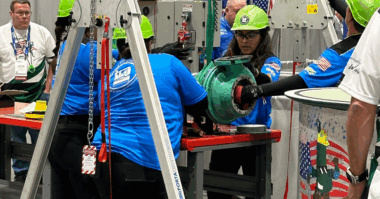In 2023, Manufacturers Alliance will celebrate its 90th anniversary. As I look backward at the sector’s history and forward to the workforce of the future, there is a consistent, top issue for manufacturers: talent. And while factories are busy buying robots and automation solutions to help with efficiency and the labor shortage, studies show that digital tools often add jobs to a company–even if the jobs look a bit different.
Another avenue of new workers has been the return of women to manufacturing. While men still hold most manufacturing jobs, women had made steady progress until the pandemic hit. They left the workforce in droves at the time, but have started to return to manufacturing companies at a growing rate since 2021, an anomaly from many other sectors.
While manufacturing has come a long way (I hope!) from its perception as dirty and dangerous –it still has a long way to go to mainstream adoption. Sitcom parents aren’t pressuring their kids to become plant managers, digitalization experts, or 3D part designers; doctors and lawyers seem embedded in our lexicon. But they should. Careers in manufacturing are growing, steady, and increasingly complex. Apprenticeship programs and trade schools can make entering the industry more accessible. So how do we get the word out to get manufacturing the talent it needs to thrive for the next 90 years?
•Don’t forget the nightshift
Make sure second and third-shift workers are included in your programming to upskill, reskill, and retain talent and are an active part of your DEI initiatives. Make sure your Employee Resource Groups (ERGs) include all your staff.
•Broaden your reach
Your plant workers, warehouse employees, transportation/logistics team provide additional pools of talent that may not come through traditional corporate channels.
•Get bold
Rethink your talent pipeline. Are you only recruiting from certain schools or requiring a specific number of years or management experience? That amazing warehouse leader –What’s stopping you from offering up a new factory or salaried role if they’ve shown the potential? Talent comes from different backgrounds and may open eyes and ears to new ideas.
•Support working caregivers
Many manufacturing roles cannot offer the flexibility of other work-from-home jobs. What benefits can set you apart? By supporting your caregivers, you support the next generation, parents, and the entire community.




